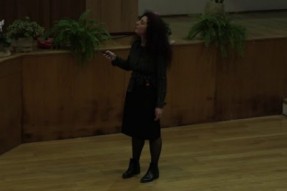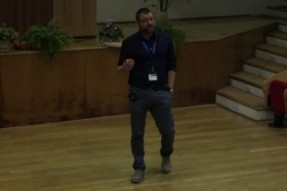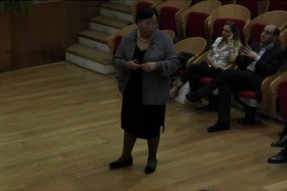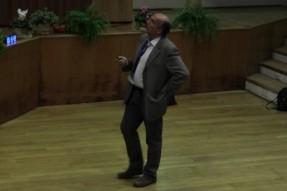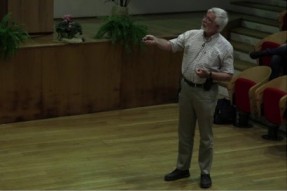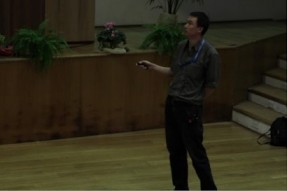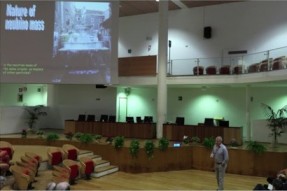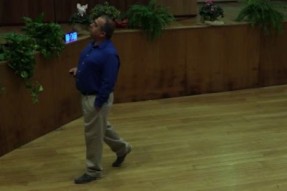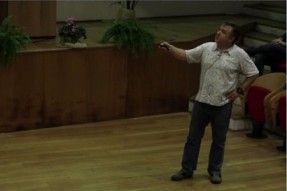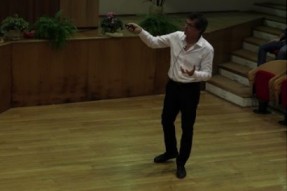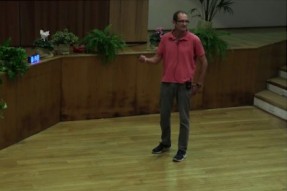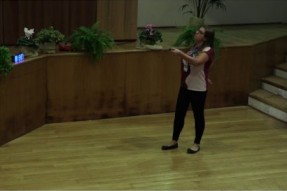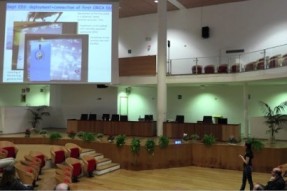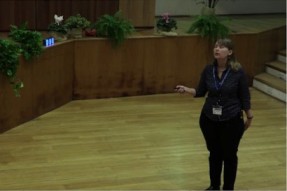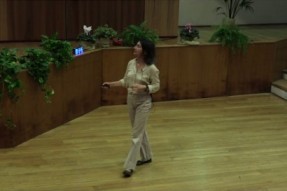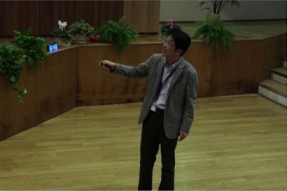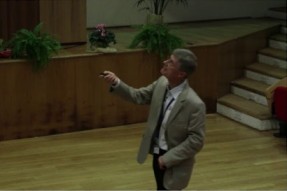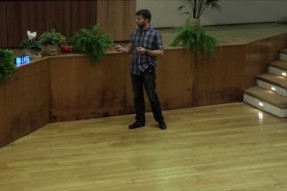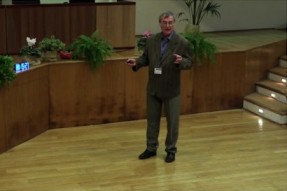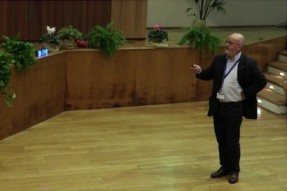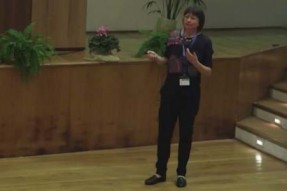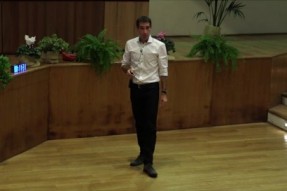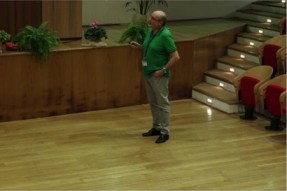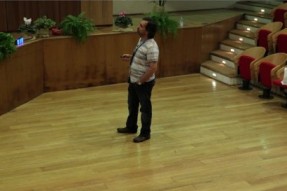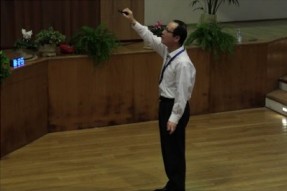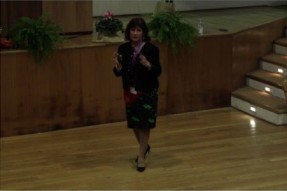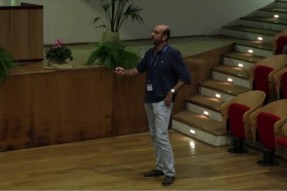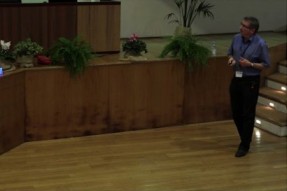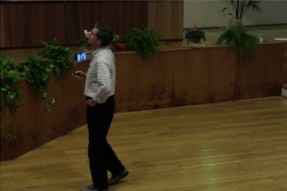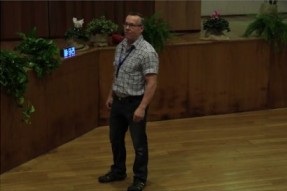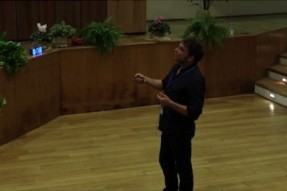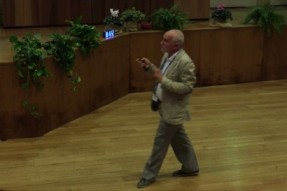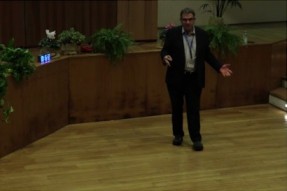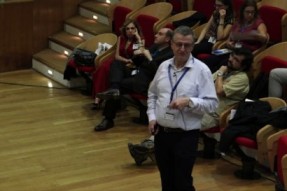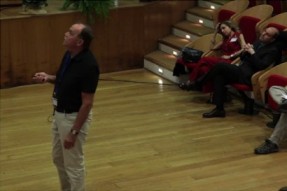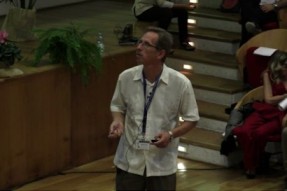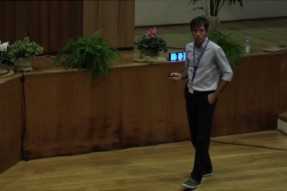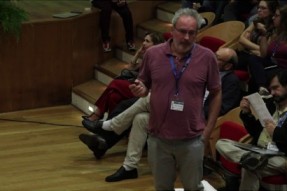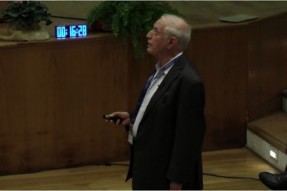Determination of the neutrino mass by electron capture in 163Holmium
Amand Faessler (Tuebingen University, Germany)
The atomic pair 163Ho and 163Dy seems due to the small Q value of 2.8 (+- 0.08) keV the best case to determine the neutrino mass by electron capture. After electron capture in 163Ho and emission of an electron neutrino the combined atomic and nuclear system is in an excited atomic state of 163Dy. Dy deexcites by X -ray and by Auger electron emission. A bolometer measures the full deexcitation energy. The released energy of the Q-value of the difference of the ground states of 163Ho and 163Dy excites 163Dy and emits a neutrino (and is used for the very small recoil of Holmium, which can be neglected). The maximal excitation energy of Dy corresponds to the minimal energy of the electron neutrino, which is his rest mass. Thus the energy between the upper end of the bolometer spectrum and the Q value is the electron neutrino mass.
Till our work1 and also an estimate of the effects of the two-hole states by Robertson2 the bolometer spectrum has been calculated allowing in Dysprosium one-hole excitations only. In ref. three3 we included also two-hole excitations3, which modify the spectrum. We also investigated three-hole states4 and found, that they do not influence the bolometer spectrum appreciably and can be neglected. The neutrino mass must finally be obtained by a simultaneous fit together with the Q value and the properties of the relevant one-, and two-electron hole excitations for the upper end of the spectrum.
Recently a method developed by Intemann and Pollock5 was used by DeRujula and Lusignoli6 for an estimate of the contribution, that by electron capture in Ho electrons escape in the intermediate continuum states in Dy (shake-off). A highly improved method for the description of this shake-off process was developed by us and shows7, that the estimate of shake-off by DeRujula and Lusignoli6, which uses non-relativistic Coulomb wave functions with the same effective screening charge for all electron orbits connected to one specific capture process (to guarantee orthogonality of the electron wave functions), overestimates the shake-off effect by up to two orders of magnitude. We use selfconsistent Dirac-Hartree-Fock wave functions8 for the bound and (in a very good approximation also) for the continuum electron states in Ho and in Dy.
The present data of the ECHo collaboration9 (Heidelberg, Mainz, Tuebingen and others), HOLMES (Milano et al.) and NUMECS (LosAlamos et al.) are not yet accurate enough to try to extract a neutrino mass. A very exact measurement in an underground laboratory will be needed to reduce the background near the Q value by about two orders of magnitude. A first step is the measurement of ECHo in the French underground lab of Modane in the Fréjus tunnel. To determine the neutrino mass with an error less than 0.2 eV the Q value and other parameters describing the spectrum near 2.8 keV have to be known with this accuracy. This is not possible from theoretical calculations. To extract the neutrino mass one must adjust to the data simultaneously the Q value, the position, width and strength of the highest one- or two-hole state assuming a Lorentzian shape. These are five parameters to be fitted to the data at the upper end of the spectrum using the theoretical analytic expression for the shape. This is very difficult, but seems possible. If more than one resonance determine the upper end of the spectrum one has three parameters more and the determination of the neutrino mass will be probably impossible this way. But our analysis1,3,4,7 shows, that for 163Dy only one resonance influences the upper end of the spectrum appreciably, which allows probably to extract from improved data the neutrino mass.
"CNNP 2017 - Conference on Neutrino and Nuclear Physics" (Catania, 15-21 October 2017)
Vedi anche
- Bellezze e sporcizia nell'Universo
- Simmetria: la ricerca di ordine in natura
- Structure of proton-rich nuclei via mirror beta decay and charge exchange reactions
- Developments and applications of Micro-Pattern Gaseous Detectors (MPGD): a concise review
- Novel approaches to the nuclear physics of double beta decay
- DAMA/LIBRA results and perspectives
- The SOX experiment at LNGS for the search of sterile neutrinos
- The HALO and HALO-1kT Supernova Detectors
- Low-energy neutrino experiment at Jinping
- Theory of neutrino masses and mixing
